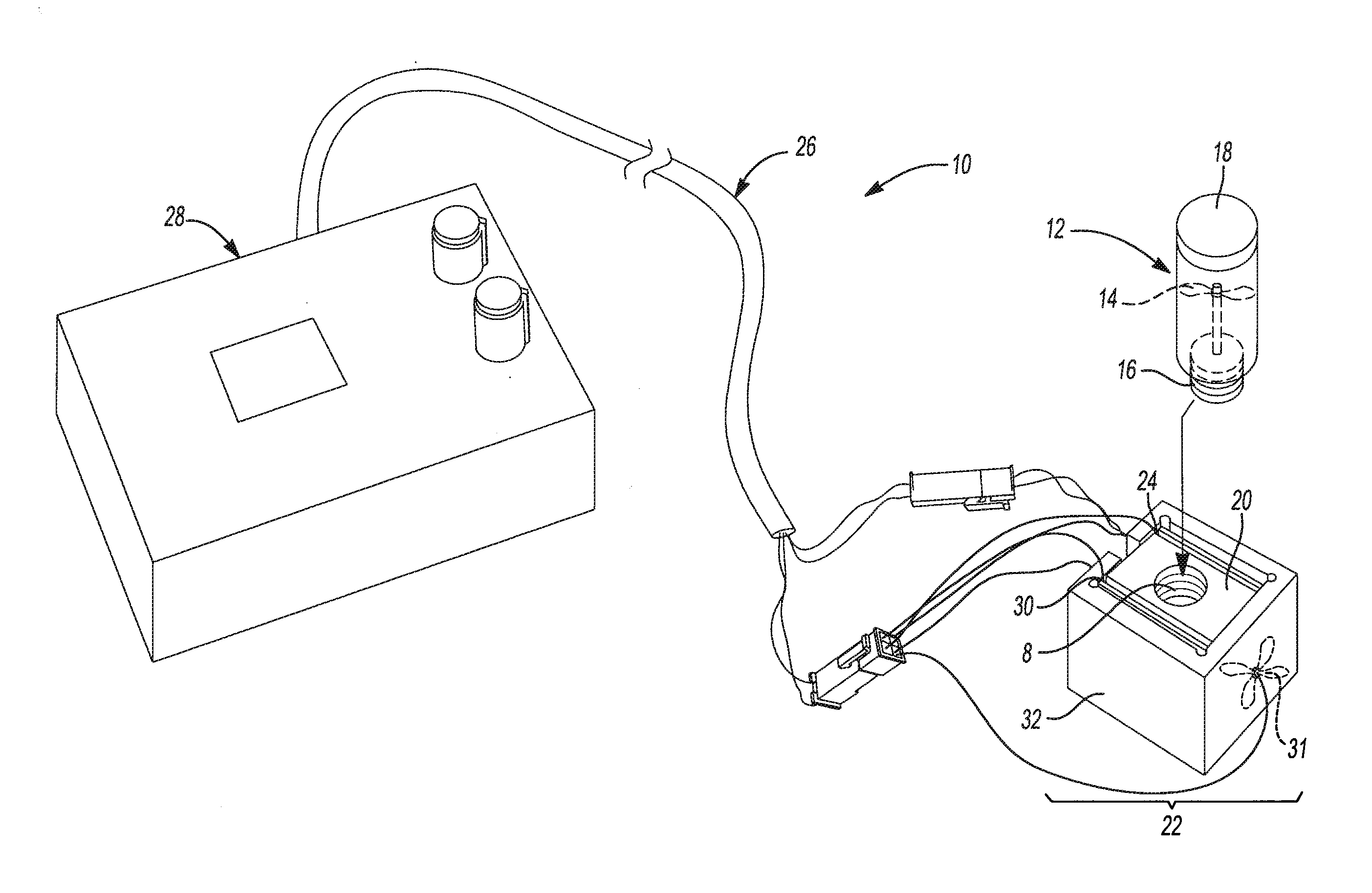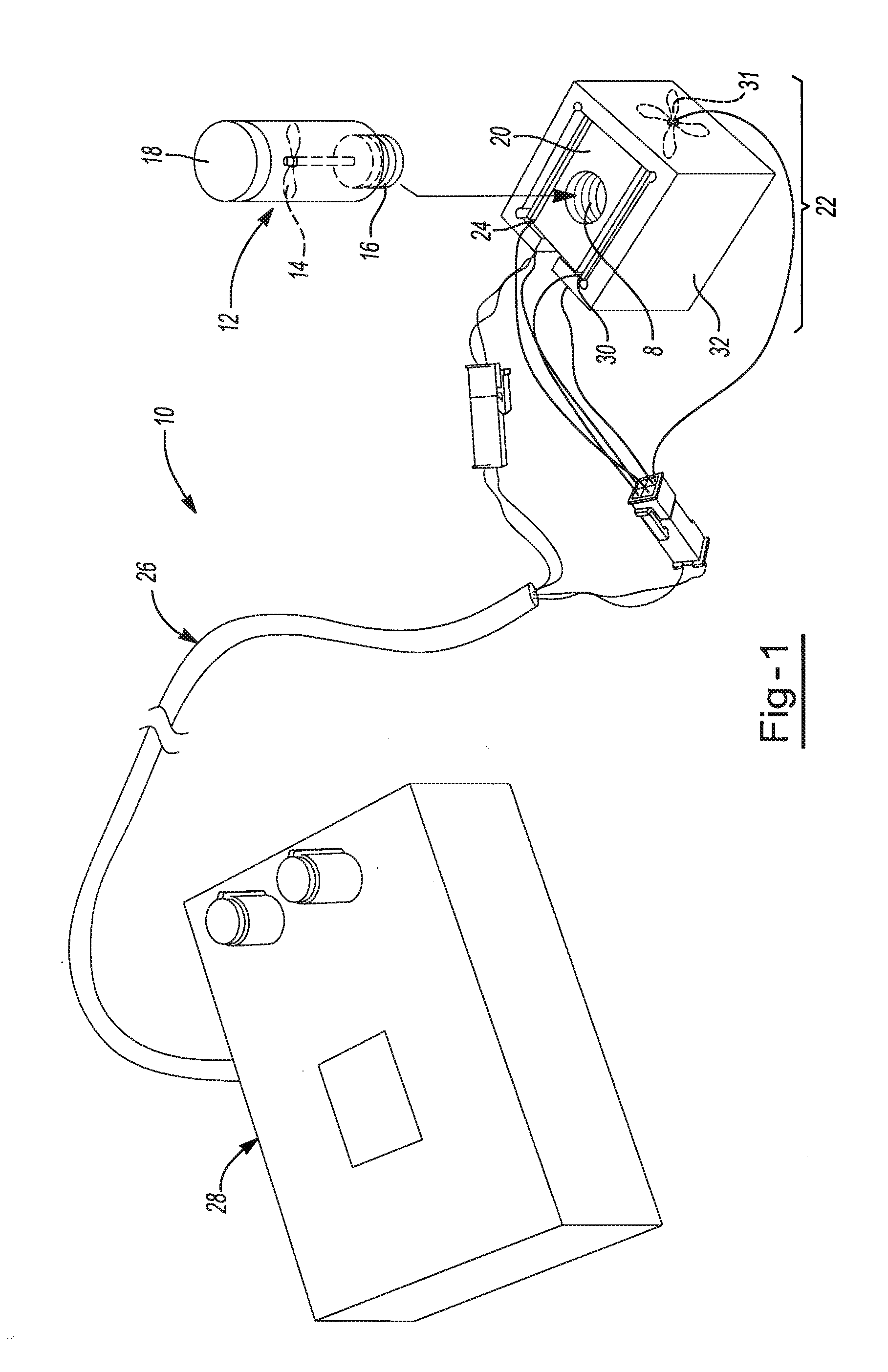Sample processing cassette, system, and method
a processing cassette and sample technology, applied in the field of integrated processing units, can solve the problems of high infectious disease mortality rate, ineffective treatment, and insufficient funding, infrastructure, and skilled labor force necessary to establish or maintain such facilities, and achieve the effect of minimizing the risk of infection for health care workers
- Summary
- Abstract
- Description
- Claims
- Application Information
AI Technical Summary
Benefits of technology
Problems solved by technology
Method used
Image
Examples
Embodiment Construction
[0021]In general, the invention herein contemplates a device and method for the collection, treatment and analysis of a source material. In the application to clinical diagnostics, all collection, treatment and analysis steps may take place at one point-of-care medical facility. The processing equipment disclosed herein allows for simultaneous mechanical, chemical and / or thermal treatment of a source material. All collection, treatment and analysis of the source material may be performed in a closed system so that risk of exposure of workers to the source material or any derivative of the source material is minimized. The collection may occur so that the source material is sealed within a specimen container. The treatment may occur so that the source material releases or creates a target material for analysis. For example, a lysing step may be employed by which a cell well or cell membrane is degraded to release one or more nucleic acids and / or proteins contained therein. Complete p...
PUM
 Login to View More
Login to View More Abstract
Description
Claims
Application Information
 Login to View More
Login to View More - R&D
- Intellectual Property
- Life Sciences
- Materials
- Tech Scout
- Unparalleled Data Quality
- Higher Quality Content
- 60% Fewer Hallucinations
Browse by: Latest US Patents, China's latest patents, Technical Efficacy Thesaurus, Application Domain, Technology Topic, Popular Technical Reports.
© 2025 PatSnap. All rights reserved.Legal|Privacy policy|Modern Slavery Act Transparency Statement|Sitemap|About US| Contact US: help@patsnap.com



